THCA vs THC: Understanding the Historical Difference Between Cannabinoids
For decades, cannabis consumers and even many researchers used the terms THCA and THC interchangeably, unaware that this single letter difference represented a fundamental distinction in cannabinoid chemistry. The confusion between these two compounds is understandable—after all, when you light up cannabis flower, you're experiencing THC's effects regardless of which compound started in the plant. But understanding the THCA vs THC history reveals a fascinating story of scientific discovery, cultural practices, and legal implications that continue to reshape the cannabis industry today.
The difference between THCA and THC isn't just academic—it's the key to understanding why raw cannabis won't get you high, how ancient cultures unknowingly converted compounds through heat, and why modern legal frameworks struggle to classify these substances. This distinction has profound implications for consumers choosing between THCA flower and traditional THC products, for cultivators optimizing their growing techniques, and for researchers exploring therapeutic applications.
Historically, the cannabis plant was consumed in various forms—smoked, vaporized, cooked, and even eaten raw—long before scientists understood the chemical transformations occurring during these processes. Ancient users experienced powerful psychoactive effects from smoking cannabis without knowing they were triggering decarboxylation, the chemical reaction that transforms THCA into THC. Meanwhile, those who consumed raw cannabis in juices or tinctures received entirely different benefits, unknowingly preserving THCA in its natural acidic form.
Today's understanding of cannabinoid differences came through decades of research, failed experiments, and gradual discoveries that mapped the intricate biosynthetic pathways in cannabis plants. This knowledge now empowers modern consumers to make informed choices about their cannabis consumption, whether they seek the psychoactive experience of decarboxylated THC or the potential wellness benefits of raw THCA.
Chemical Structure History: Discovering the Acidic Precursor
The story of what is THCA vs THC begins with pioneering cannabis research in the mid-20th century. While THC was isolated and identified in 1964 by Israeli chemist Dr. Raphael Mechoulam and his colleague Yechiel Gaoni, THCA had been observed earlier but not fully understood. Scientists initially struggled to explain why fresh cannabis plants contained compounds that seemed chemically different from what appeared after heating or aging.
The breakthrough came when researchers recognized that THCA was not a separate cannabinoid entirely, but rather the biosynthetic precursor to THC. The "A" in THCA stands for "acid"—specifically, tetrahydrocannabinolic acid. This distinction reflects a fundamental difference in molecular structure that explains their dramatically different properties and effects.
Examining the chemical formulas reveals this difference: THCA (C22H30O4) contains an additional carboxyl group (COOH) compared to THC (C21H30O2). This extra carboxylic acid group is attached to the molecule, making THCA larger and giving it different properties. The carboxyl group is acidic in nature, which is why THCA is considered the "acidic form" of THC.
Understanding why the acidic form exists in nature required insights from plant biology. Cannabis plants don't produce psychoactive compounds as their primary metabolic goal—instead, they produce THCA as part of their natural defense mechanisms and metabolic processes. The carboxylic acid group makes THCA more stable in plant tissues, allowing it to be stored without degrading. It's only through heat, time, or UV light exposure that THCA loses this carboxyl group and converts to the neutral form we know as delta-9 THC.
The historical understanding of this evolution took decades. Early cannabis researchers often worked with dried, aged, or heated samples, meaning they were frequently studying THC without realizing the plant's living tissues contained predominantly THCA. It wasn't until more sophisticated analytical techniques became available in the 1970s and 1980s that the full picture emerged. Gas chromatography, which requires heating samples, was inadvertently converting THCA to THC during analysis—leading to years of confusion about the plant's actual cannabinoid content.
This THCA THC comparison in molecular structure explains why consuming raw THCA flower produces effects so different from smoked or vaporized cannabis. The carboxyl group prevents THCA from binding effectively to CB1 receptors in the brain, which are responsible for THC's intoxicating effects. Remove that group through heat, and the molecular shape changes just enough to fit those receptors like a key in a lock.
The Decarboxylation Discovery: Heat, Time, and Transformation
The discovery of THCA decarboxylation represents one of the most important breakthroughs in understanding cannabis chemistry. Decarboxylation—the removal of a carboxyl group—is a well-known chemical reaction, but applying this knowledge to explain THC conversion from its acidic precursor took years of dedicated research.
When scientists first understood heat conversion in the 1960s and 1970s, it revolutionized cannabis research. They discovered that applying heat to THCA causes it to lose its carboxyl group (releasing carbon dioxide in the process) and transform into delta-9 THC. This reaction occurs most efficiently at temperatures between 220-245°F (104-118°C), though it can happen at lower temperatures given sufficient time.
Temperature and time factors are crucial to THCA decarboxylation. Higher temperatures speed the process but can also degrade THC into less desirable compounds like CBN (cannabinol). Lower temperatures require longer exposure times but may preserve more desirable cannabinoids and terpenes. This understanding has led to precise decarboxylation protocols for modern cannabis product manufacturing.
Fascinatingly, historical smoking and heating practices were unknowingly decarboxylating THCA all along. When ancient cultures burned cannabis in ceremonies, cooked it in foods, or smoked it in pipes, they were triggering this chemical transformation without understanding the underlying science. The temperature of a burning joint (around 1200°F or 650°C at the ember) far exceeds what's needed for decarboxylation, meaning THCA converts to THC almost instantly as smoke passes through the burning material.
Research into optimal THCA decarboxylation intensified in the 2000s as medical cannabis programs demanded consistent, standardized products. Scientists conducted careful studies measuring conversion rates at various temperatures and durations. They discovered that decarboxylation isn't instantaneous—even at ideal temperatures, the reaction proceeds gradually, with different rates depending on factors like moisture content, sample thickness, and airflow.
Why ancient users experienced THC effects without understanding decarboxylation is now clear: any heating method—from primitive oil lamps to modern vaporizers—was sufficient to trigger the conversion. Even traditional cooking methods, like making cannabis-infused ghee or butter in many ancient cultures, involved temperatures high enough for decarboxylation. The psychoactive effects these users experienced came from THC, even though the plant material originally contained THCA.
Laboratory studies on conversion rates have shown that complete decarboxylation can take as little as 30-45 minutes at optimal temperatures in controlled conditions. However, in practical applications like smoking or vaping, the conversion happens so rapidly (within seconds in the high-heat environment) that users immediately experience THC's effects. Modern consumers interested in both forms can explore quality THCA products and choose their consumption method based on desired effects.
How Plants Produce THCA, Not THC: Nature's Chemistry
The revelation that raw cannabis THCA is what plants actually produce, rather than THC, fundamentally changed our understanding of cannabis biology. Biosynthesis pathways discovered through decades of plant science research revealed an elegant chemical process that occurs naturally in cannabis trichomes.
The key player in this process is the THCA synthase enzyme, discovered through genetic and biochemical research in the 1990s. This enzyme catalyzes the formation of THCA from its precursor, cannabigerolic acid (CBGA). Cannabis plants produce CBGA first, then specific synthase enzymes convert it into various acidic cannabinoids—including THCA, CBDA (cannabidiolic acid), and CBCA (cannabichromenic acid). Different cannabis varieties have different amounts and types of these synthase enzymes, which explains why some strains are THC-dominant while others produce primarily CBD.
Why do plants make the acidic form rather than producing THC directly? The answer lies in plant biology and evolutionary adaptation. The carboxylic acid group makes THCA more water-soluble and stable within plant tissues. This stability is crucial for storage in the plant's trichomes, where cannabinoids accumulate in high concentrations. THCA can remain stable in living plant tissue for extended periods, whereas THC would be more prone to degradation.
Interestingly, THC does appear in nature—but primarily as a degradation product rather than something plants intentionally produce. Small amounts of THC appear in living plants through spontaneous decarboxylation from environmental factors like heat and UV light exposure. As plants age or are stored, some THCA naturally converts to THC over time, even without intentional heating. This explains why aged cannabis typically shows higher THC content relative to THCA than fresh material.
Understanding through plant biology research has profound cultivation implications. Growers aiming to maximize THCA content (which converts to THC during consumption) now understand the importance of environmental factors. Temperature control, lighting spectra, nutrient ratios, and harvest timing all influence THCA synthase activity and overall cannabinoid production.
The biosynthetic pathway also explains why heated cannabis THC products start with THCA-rich plant material. Extraction companies source high-THCA flower, then apply heat during processing to convert it to THC for specific products. Alternatively, some products preserve THCA in its natural form, offering consumers the choice between the two compounds.
Modern cultivators have leveraged this understanding to develop strains with optimized THCA production. By selecting genetics with high THCA synthase activity and growing in conditions that maximize cannabinoid synthesis, producers can now offer premium THCA flower with remarkably high concentrations—sometimes exceeding 25% THCA by dry weight.
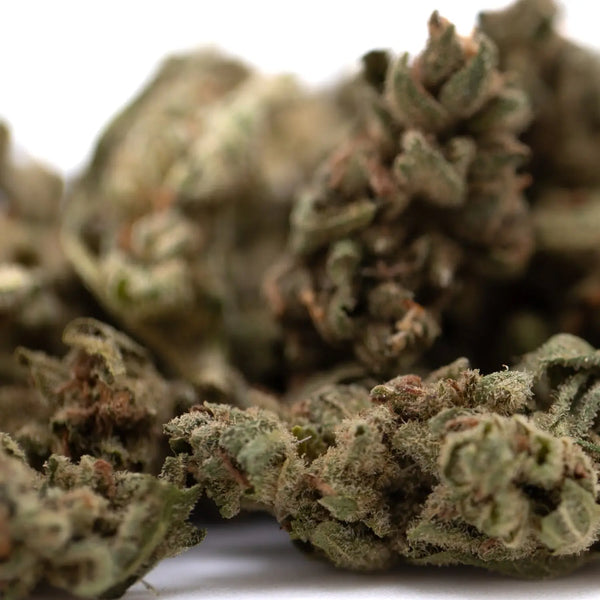
Historical Uses: Raw vs. Heated Cannabis Through the Ages
The history of cannabis consumption reveals that humans have been experiencing both THCA and THC effects for thousands of years, even without understanding the distinction. Ancient raw cannabis consumption appears in historical records from multiple civilizations, where cannabis was juiced, eaten fresh, or used in unheated preparations. These users were primarily consuming THCA, experiencing effects quite different from those who smoked or cooked the plant.
Traditional heating methods created what we now understand as THC conversion experiences. Smoking cannabis has been documented for at least 2,500 years, with archaeological evidence from Central Asian burial sites showing burned cannabis seeds and residue in braziers. Ancient cultures in India, China, and throughout Asia developed sophisticated methods for heating cannabis—from simple burning to elaborate water pipes and cooking techniques. Each method unknowingly decarboxylated THCA, delivering THC's psychoactive effects.
Different effects were experienced historically depending on consumption method. Ancient Chinese texts describe cannabis as both a consciousness-altering substance (when heated) and a medicinal plant for various ailments (often in raw or minimally processed forms). Indian Ayurvedic traditions used both raw cannabis juice and bhang (a preparation involving grinding and sometimes gentle heating), creating different therapeutic applications. Historical users clearly recognized that consuming cannabis in different forms produced different results, even if they couldn't explain the chemistry.
The modern raw cannabis juice movement, popularized in recent decades, actually revives ancient practices. Dr. William Courtney, a physician and cannabis researcher, has been instrumental in promoting raw cannabis consumption since the early 2000s. His research suggests that consuming raw cannabis provides access to THCA's potential benefits without THC's psychoactive effects. Dr. Courtney advocates for raw cannabis as a dietary supplement, arguing that the acidic cannabinoids offer their own therapeutic value.
Dr. William Courtney's research has highlighted that heating cannabis to experience THC's effects actually limits the quantity of cannabinoids one can consume. Since THC is intoxicating, practical consumption limits exist—but THCA, being non-intoxicating, can theoretically be consumed in much larger quantities. His work has inspired renewed interest in understanding THCA benefits vs THC benefits as distinct rather than equivalent.
Cultural practices across civilizations demonstrate the diversity of cannabis use. Ancient Egyptians may have used cannabis in various forms, including unheated preparations. Scythian tribes, documented by Herodotus, threw cannabis on hot stones to create vapor—a form of heating that would decarboxylate THCA. African tribes developed their own smoking and preparation methods. Medieval Islamic cultures, while prohibiting alcohol, sometimes embraced cannabis in forms like hashish, which involves collection and pressing of resin—a process that can partially decarboxylate cannabinoids through friction and heat.
This historical context reveals that the difference between THCA and THC has shaped human experience with cannabis for millennia, even before we had names for these compounds. Today's consumers can make informed choices about THCA products based on this accumulated wisdom combined with modern scientific understanding.
Legal History and Distinctions: When One Letter Matters to the Law
The legal history surrounding THCA vs THC demonstrates how scientific understanding shapes policy—and how policy sometimes lags behind science. When laws began distinguishing cannabinoids, the focus was primarily on THC as the psychoactive component. Early drug scheduling systems in the United States and internationally targeted "THC" without carefully defining whether this meant delta-9 THC specifically, total THC (THCA + THC), or all tetrahydrocannabinol compounds.
Testing methodology evolution has been central to legal distinctions. Early cannabis testing used gas chromatography, which requires heating samples to vaporize them for analysis. This inadvertently decarboxylated all THCA into THC during testing, making it impossible to distinguish between the two. Results showed "total THC" because the testing process itself converted everything. It wasn't until high-performance liquid chromatography (HPLC) became widely available in the 1990s and 2000s that laboratories could analyze cannabis without heating it, revealing the true THCA content.
The distinction between total THC vs. delta-9 THC testing became legally crucial with the 2018 Farm Bill. This legislation legalized hemp, defined as cannabis containing less than 0.3% delta-9 THC by dry weight. The specific mention of "delta-9 THC" rather than "total THC" created what many see as a legal loophole: cannabis flower containing high levels of THCA but low levels of delta-9 THC could potentially be classified as legal hemp, even though heating it would produce significant psychoactive effects.
Legal implications of THCA vs THC continue to evolve. Some states test for total THC (calculating THCA + existing THC), while others test only for delta-9 THC. This inconsistency creates confusion in the marketplace and challenges for cultivators trying to comply with regulations. A cannabis plant might be legal under one testing methodology but illegal under another, despite being chemically identical.
The 2018 Farm Bill's impact on THCA products has been particularly significant. Some companies have begun marketing high-THCA flower as a hemp product, arguing that the plant itself contains only small amounts of delta-9 THC and therefore meets the legal definition of hemp. This interpretation remains controversial and untested in many jurisdictions. State and federal authorities continue grappling with whether pre-decarboxylation cannabinoid content or post-decarboxylation potential should determine legal status.
Why this distinction matters legally extends beyond simple compliance. It affects:
- Criminal prosecution decisions
- Medical vs. recreational program classifications
- Interstate commerce regulations
- Testing and labeling requirements
- Tax structures and business regulations
- Access for consumers in different legal environments
The THCA THC comparison in legal contexts reveals fundamental questions about how society regulates intoxicating substances. Should laws focus on what a substance is in its natural state, or what it becomes when consumed? Is THCA itself a controlled substance, or only the THC it converts to? Different jurisdictions have answered these questions differently, creating a patchwork of regulations that consumers and businesses must navigate carefully when exploring THCA flower options.
Effects and Properties Through History: From Anecdote to Science
Historical anecdotal reports about cannabis effects predated scientific understanding of cannabinoid differences by centuries. Ancient texts described cannabis as producing everything from euphoria and altered consciousness to pain relief and appetite stimulation. What these early observers were describing were THC's effects, produced through decarboxylation during traditional consumption methods. However, cultures that used raw cannabis preparations reported different benefits—likely experiencing THCA's properties instead.
Research into different effects began systematically in the 1960s and 1970s. Dr. Mechoulam's work isolating THC led to studies on its psychoactive properties, interactions with brain receptors, and therapeutic potential. As analytical methods improved, researchers could distinguish between acidic and neutral cannabinoids, eventually recognizing that THCA's non-intoxicating nature was due to its poor binding affinity for CB1 receptors in the brain.
THC's psychoactive properties became well-documented through clinical research. Studies demonstrated that THC binds to CB1 receptors throughout the central nervous system, producing effects including altered perception, mood changes, increased appetite, pain relief, and in some cases, anxiety or paranoia. The "high" associated with cannabis comes almost entirely from THC (and to a lesser extent, other psychoactive cannabinoids like delta-8 THC and THCV).
THCA, by contrast, doesn't produce intoxication when consumed in its raw form. This non-intoxicating nature has sparked interest in THCA as a potential wellness compound. While research is still emerging, preliminary studies and anecdotal reports suggest THCA may have its own properties distinct from THC—though definitive clinical evidence remains limited.
Therapeutic research timelines show an interesting evolution. THC dominated early cannabis research because it was the obvious explanation for marijuana's effects. Medical cannabis programs focused on THC content as the primary measure of potency. However, as the "entourage effect" concept gained traction in the 2000s, researchers began examining other cannabinoids, including acidic forms like THCA and CBDA.
Modern understanding vs. historical use reveals fascinating parallels. Ancient cultures that consumed raw cannabis likely experienced THCA's effects without understanding the compound. Those who heated cannabis experienced THC's psychoactivity. Modern consumers can now choose deliberately between these experiences based on scientific understanding rather than trial and error.
The THCA benefits vs THC benefits question represents an active area of research. THC's therapeutic applications include:
- Pain management
- Nausea and appetite stimulation (especially in chemotherapy patients)
- Muscle spasticity in conditions like multiple sclerosis
- Sleep disorders
- Certain anxiety disorders (though THC can also trigger anxiety)
THCA's potential applications are less established but include:
- Anti-inflammatory properties (suggested by preliminary research)
- Neuroprotective effects (studied in animal models)
- Anti-nausea properties (without psychoactivity)
- Potential anti-proliferative effects (very early research)
It's crucial to note that much THCA research is preliminary, and more clinical studies are needed to establish definitive therapeutic benefits. However, the distinction between these compounds allows consumers to make informed choices about whether they want psychoactive effects from heated cannabis THC or potential wellness benefits from raw cannabis THCA available in modern THCA products.
The historical trajectory from anecdotal reports to systematic research demonstrates how understanding the difference between THCA and THC has matured. We've moved from simply observing that cannabis produces various effects to understanding precisely which compounds cause which effects and why. This knowledge empowers both researchers pursuing new therapeutic applications and consumers making personal wellness decisions.
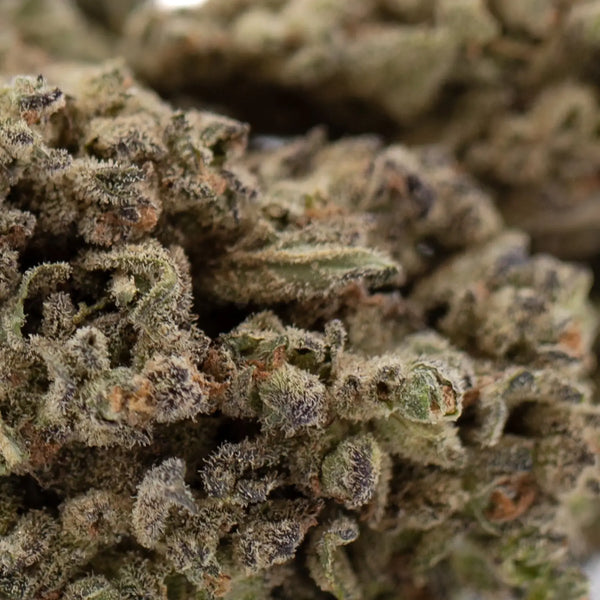
Modern Applications: Putting History Into Practice
The current THCA flower market represents the convergence of historical knowledge, scientific understanding, and legal evolution. High-quality THCA flower is now available to consumers who understand the distinction between cannabinoids and want to make informed choices about their consumption method. This market emerged from the legal complexities surrounding hemp definition and the recognition that THCA-rich flower offers unique versatility.
THC products in legal states have become increasingly sophisticated, moving far beyond traditional flower to include precisely dosed edibles, tinctures, topicals, and concentrates. These products typically undergo decarboxylation during manufacturing, converting THCA to THC to ensure consistent psychoactive effects. In fully legal markets, testing labels clearly distinguish between THCA and delta-9 THC content, helping consumers understand exactly what they're purchasing.
Consumer choice based on understanding has expanded dramatically. Today's informed cannabis consumer can choose:
- Raw THCA flower for consumption without heat, experiencing the compound in its natural acidic form
- THCA flower for heating, which converts to THC during smoking or vaporizing, producing traditional psychoactive effects
- Pre-decarboxylated THC products like edibles and tinctures with reliable, predictable effects
- Balanced products containing both THCA and THC, plus other cannabinoids like CBD
- High-ratio products emphasizing either THCA or THC based on desired outcomes
The THCA decarboxylation process allows a single product—high-quality THCA flower—to serve multiple purposes depending on how it's consumed. Want non-intoxicating effects? Juice it raw or use cold extraction methods. Want traditional psychoactive effects? Heat it through smoking, vaping, or cooking.
Future research directions are expanding our understanding of both compounds. Scientists are investigating:
- Specific therapeutic applications for THCA that don't require decarboxylation
- Optimal decarboxylation conditions for preserving other beneficial compounds like terpenes
- Combinations of THCA and THC in various ratios for targeted effects
- Novel consumption methods that allow controlled partial decarboxylation
- Biosynthetic manipulation to produce cannabis plants with specific THCA/THC ratios
- Extraction techniques that preserve acidic cannabinoids for products that don't require heating
The modern cannabis industry has also learned from historical cultivation and consumption practices. Traditional growing methods, ancient heating techniques, and cultural preparation methods inform contemporary approaches. However, today's producers combine this wisdom with precise environmental controls, genetic selection, and analytical testing to create products of unprecedented quality and consistency.
Understanding what is THCA vs THC is no longer just academic—it's practical knowledge that affects product selection, consumption methods, legal compliance, and expected effects. Consumers exploring new THCA releases benefit from centuries of human experience with cannabis combined with modern scientific rigor.
The market continues evolving as regulations adapt to scientific understanding. Some predict eventual standardization around total THC testing that accounts for THCA's conversion potential. Others foresee distinct markets for THCA and THC products, each with their own regulatory frameworks. Regardless of how regulations develop, the fundamental chemistry remains unchanged: THCA is the acidic precursor that cannabis plants produce naturally, and THC is the decarboxylated form that produces psychoactive effects.
Conclusion: The Critical Importance of Understanding the Difference
The journey through THCA vs THC history reveals that this distinction, while chemically straightforward, has profound implications for how we understand, regulate, and use cannabis. What might seem like a minor difference—one carboxyl group, represented by a single letter—actually explains centuries of human experience with this remarkable plant.
Understanding the difference between THCA and THC empowers consumers to make informed decisions. Those seeking psychoactive effects know that heating is essential to convert THCA to THC through THCA decarboxylation. Those interested in potential wellness applications without intoxication can explore raw cannabis preparations that preserve THCA in its natural form. This knowledge transforms cannabis from a single-use plant into a versatile botanical with multiple applications depending on how it's prepared and consumed.
How history informs modern use cannot be overstated. Ancient cultures discovered through trial and error that heating cannabis produced different effects than consuming it raw. Traditional cultivation practices optimized plants for specific uses without understanding the underlying chemistry. Historical legal frameworks struggled to define what made cannabis intoxicating. All of these historical developments now make sense when we understand the THCA THC comparison at the molecular level.
Today's cannabis landscape offers unprecedented choice and quality. High-THCA flower, carefully cultivated and tested, provides versatility that honors both the plant's natural chemistry and historical consumption methods. Whether you choose to heat your cannabis, converting THCA to THC for traditional effects, or explore raw preparations that preserve the acidic form, you're participating in a consumption practice that connects modern science with ancient wisdom.
The future of cannabis will undoubtedly bring new discoveries about both THCA and THC, deeper understanding of their therapeutic applications, and more sophisticated products that leverage the cannabinoid differences we now recognize. As research continues and regulations evolve, the fundamental chemistry we've explored here will remain the foundation for innovation and consumer choice.
For those ready to explore the world of high-quality THCA flower with the knowledge to use it effectively, visit our collection of premium THCA products. Whether you're interested in the historical aspects of cannabis consumption, the legal implications of cannabinoid distinctions, or simply want to experience cannabis with full understanding of what you're consuming, our selection offers carefully cultivated flower that honors both the plant's natural chemistry and your informed choice as a consumer.
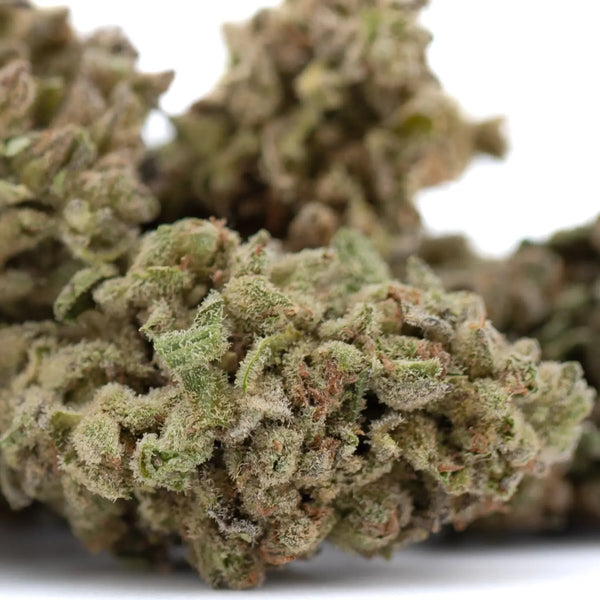
Frequently Asked Questions
Is THCA the same as THC?
No, THCA and THC are chemically distinct compounds. THCA (tetrahydrocannabinolic acid) is the acidic precursor that exists naturally in cannabis plants. It contains a carboxyl group (COOH) that THC lacks, giving it different properties, including the inability to produce intoxicating effects. THC (delta-9-tetrahydrocannabinol) is the decarboxylated form—created when THCA loses its carboxyl group through heat, time, or UV exposure. While closely related, they're not the same compound and produce different effects. Understanding what is THCA vs THC is essential for making informed choices about cannabis consumption and product selection.
Does THCA turn into THC?
Yes, THCA converts to THC through a process called decarboxylation. This THC conversion occurs when THCA is exposed to heat (most commonly), time, or UV light. The reaction removes the carboxyl group from THCA's molecular structure, transforming it into psychoactive THC. Smoking or vaporizing cannabis instantly decarboxylates THCA due to the high temperatures involved. Cooking cannabis in edibles requires lower heat over longer periods to achieve complete THCA decarboxylation. Even without intentional heating, THCA slowly converts to THC as cannabis ages, though this process is much slower than heat-induced decarboxylation. This conversion is why THCA flower can produce psychoactive effects when smoked or vaped, despite containing minimal THC in its raw form.
Which is stronger, THCA or THC?
THC is "stronger" in terms of psychoactive effects. THC binds effectively to CB1 receptors in the brain, producing the intoxicating "high" associated with cannabis. THCA, in its raw form, doesn't bind well to these receptors and doesn't produce intoxication. However, "stronger" depends on what effects you're seeking. If you want psychoactive experiences, THC is more potent. If you're interested in potential wellness applications without intoxication, THCA may be preferable. The THCA benefits vs THC comparison isn't about which is objectively stronger, but rather which is more appropriate for your intended use. Additionally, high-quality THCA products convert to THC when heated, providing the same psychoactive potential as THC-labeled products.
Can THCA show up on drug tests?
Yes, THCA can potentially cause you to fail a drug test. Most standard drug tests don't actually detect THCA or THC directly—they detect THC metabolites (THC-COOH) that your body produces when processing THC. When you consume THCA flower and heat it (through smoking or vaping), it converts to THC, which your body then metabolizes into these detectable compounds. Even consuming raw THCA might result in trace amounts converting to THC in your digestive system, though this is less likely to reach detectable levels. If you're subject to drug testing, you should assume that consuming raw cannabis THCA or THCA flower products could result in a positive test result, especially if consumed in heated form.
Why does cannabis contain THCA instead of THC?
Cannabis plants produce THCA rather than THC for biological and chemical stability reasons. The carboxylic acid group in THCA makes the compound more stable in living plant tissue and easier for the plant to synthesize and store. The enzyme THCA synthase naturally produces THCA from the precursor cannabigerolic acid (CBGA) as part of the plant's biosynthetic pathway. This acidic form is more water-soluble and chemically stable than THC would be in plant tissues. THC appears in living plants only in small amounts, usually as a result of spontaneous decarboxylation from environmental factors. From an evolutionary perspective, plants didn't "design" these compounds for human consumption—they produce THCA as part of their natural defense mechanisms and metabolic processes. The heated cannabis THC that humans consume is actually the result of our processing methods, not the plant's original chemistry.

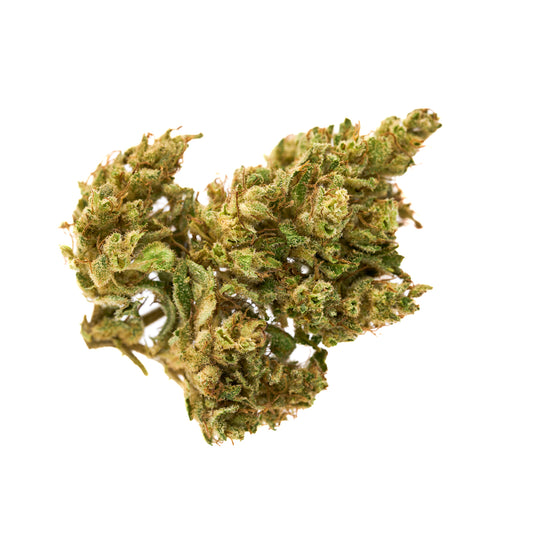
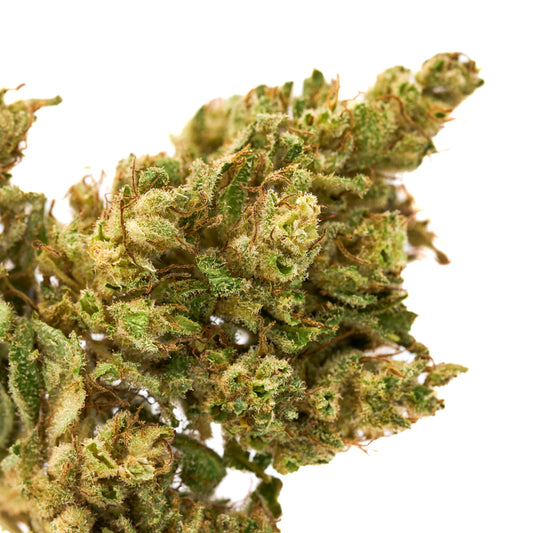
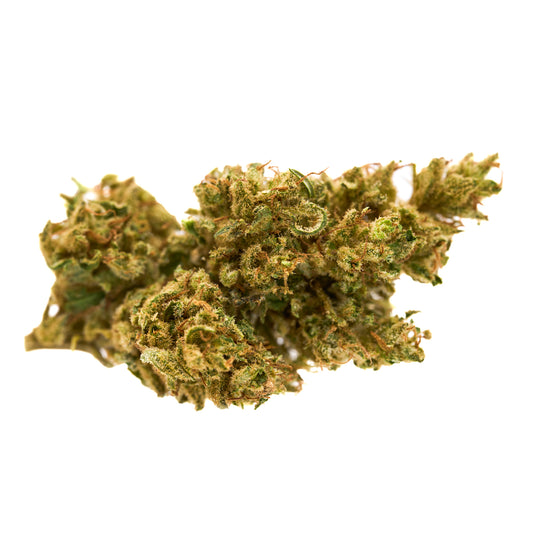

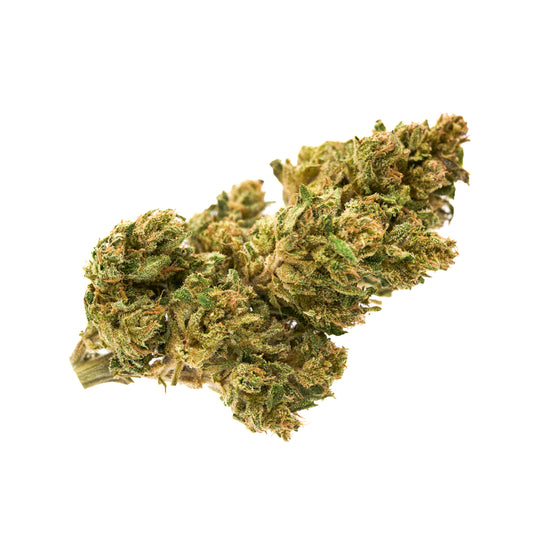




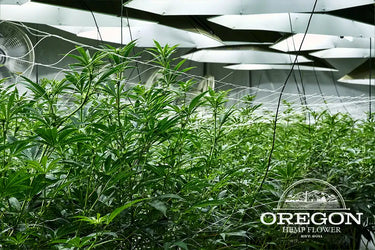

Leave a comment
Please note, comments need to be approved before they are published.